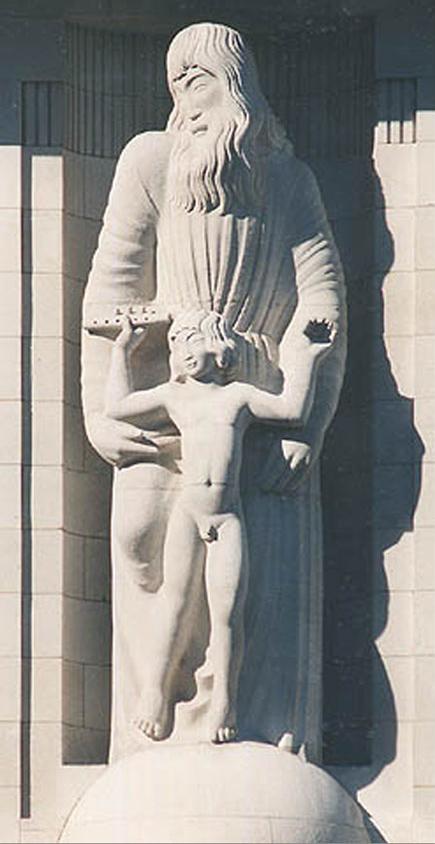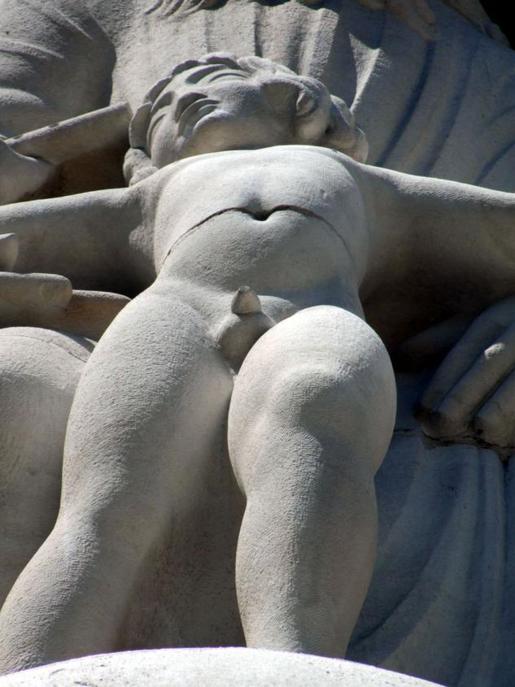Was a Shakespeare Expert Really Called in to Rule on the Genital Authenticity of a Statue of a Character from a Shakespeare Play?
Here is the latest in a series of examinations into urban legends related to the world of sculpture and whether they are true or false.
SCULPTURE URBAN LEGEND: A Shakespeare expert was called to rule on the genital authenticity of a statue of a character from a Shakespeare play.
Eric Gill was a widely respected designer of typefaces, and his work can still be seen on some Penguin books and some British Broadcasting Corporation (BBC) programs.
He was also a noted sculptor, and in 1931, he was commissioned by the BBC to do a sculpture outside of their offices in London. It seems as though Gill had a decent amount of freedom with his choice of subject, except that it was supposed to have something to do with culture (like based on a novel, a play, etc.).
Gill decided to draw two characters from William Shakespeare’s play, The Tempest.

He decided on the lead character from the play, the banished sorceror, Prospero, as well as the sprite, Ariel (Gill chose Ariel as a bit of a play on words, as the BBC delivered their radio content through aerial transmissions). Gill decided to depict the two almost like father and son.
Here is the statue…

Well, there was a bit of a problem with Ariel’s, well, his penis.
You see, people felt that Gill had drawn the sprite’s penis too large.
The Board of Governors of the BBC objected to the statue because of the penis size and they actually decided to consult with a Shakespearean scholar to get the “definitive” answer – was the penis too big?
He judged that yes, it was too big, so Gill, somewhat surprisingly, gladly agreed to adjust the size of the character’s penis, and that’s what we have today…

Gill was interesting in his ideas on the “rights” of artists regarding their work – he was basically of the mind that the artist did not control the work. He felt that the person who commissions the work should totally control the work. It’s an opinion that not a lot of artists share.
The legend is…
STATUS: True
Feel free (heck, I implore you!) to write in with your suggestions for future installments! My e-mail address is bcronin@legendsrevealed.com.






Er… “Coco Chanel had two legendary retorts to a marriage proposal by the Duke of Winchester and to a query by Poiret.”?
Article perhaps requires an edit? 🙂
Perhaps. 😉
Thanks, fixed it! The perils of the cut and paste. 🙂
So on what standard did the expert judge the genitals were too big? I’m familiar with the play and I don’t recall Ariel discussing his privates much.
I think the issue was making a determination of how old Ariel was. If he is still a boy, then his penis shouldn’t be too big.
Considering Ariel isn’t even human, and is more of a spirit of indeterminate gender, age probably shouldn’t even be a factor in that. Doubly so when you consider Ariel was at LEAST 24 years old (if not older) at the start of the play…
Of course, considering the fact that many versions of the play cast Ariel as an exclusively female role, maybe “he” shouldn’t have had a penis at all.
Its still too big, or at least way too visible.
Why dont they just put some drawers on the poor child.
Ariel is referred to in the actual text of the play with a masculine pronoun– though the role can be filled by both male and female actors without any major problems since there are no explicit references to Ariel’s genitals in the play (Shakespeare had no aversion to bawdy language, so some characters’ genitalia are explicitly mentioned in other plays.)
In Shakespeare’s time, Ariel would have been played by a boy or a teenager.
The story as I have heard it is that the expert consulted was selected not because he was a Shakespeare scholar, but was Headmaster of a boys’ boarding school, who could be expected to have accurate knowledge of a range of small boys’ genitals, and thus give a reliable opinion.
You are right about Gill’s view of the artist’s integrity. He’s known to have offered, when a patron objected to the cost of a commission, to leave out a tree, calculating that the saving in scuplting time would reduce the cost to the patron’s limit.